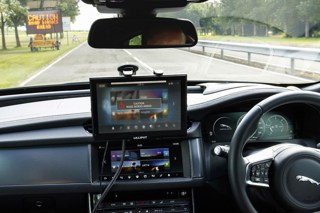The insurance industry has released a white paper to clarify uncertainty around the different levels of vehicle automation.
Insurance companies have raised “concerns about the distinction between assisted and automated systems”, according to Thatcham Research.
With changes being defined by international regulators on the capabilities of assisted and automated systems, the Automated Driving Insurer Group (ADIG), led by the Association of British Insurers (ABI) in collaboration with Thatcham Research, has released a white paper setting out the latest position of UK insurers.
The paper suggests that a clear distinction between assisted and automated systems should be made by international regulators considering design standards for these vehicles.
The paper highlights that a vehicle should only be considered automated if it has the following features:
- The driver can safely disengage in the knowledge that the car has sufficient capabilities to deal with virtually all situations on the road.
- A vehicle encounters a situation it can’t handle, that it has the ability to come to a safe stop.
- The autonomous system can avoid all conceivable crash types and can continue to function adequately in the event of a partial system failure.
- Both insurers and vehicle manufacturers can instantly access data to identify whether the driver or vehicle is liable in the case of an accident, without ambiguity.
Thatcham Research’s chief executive Peter Shaw said: “Vehicles with intermediate systems that offer assisted driving still require immediate driver intervention if the car cannot deal with a situation.
"Systems like these are fast emerging and unless clearly regulated, could convince drivers that their car is more capable than it actually is.
"This risk of autonomous ambiguity could result in a short term increase in crashes.
“Vehicle manufacturers should be judicious in badging and marketing such systems, avoiding terms which could be misinterpreted as denoting full autonomy.
"Hybrid systems which creep into the intermediate grey area between assisted and automated should also be avoided.”
ABI’s director of general insurance policy James Dalton said: “The insurance industry strongly supports the development of automated driving technology – which we see as the logical conclusion to work over several decades to reduce the numbers of people killed or seriously injured on the roads.
“However, we know all too well from conventional vehicles that drivers often misunderstand what their vehicles can and can’t do.
"Therefore, consistent standards are needed so that those taking up automated driving technology can do so with confidence.”
ADIG’s chairman and head of underwriting at AXA David Williams said: “Autonomous vehicles will make our roads much safer, but inappropriate use or marketing of intermediate technology could confuse road users and cause unnecessary accidents. "Clarity over system capability and commitment to share vehicle data with insurers will help public confidence, and help rather than hinder development in this area”
The full report is available online.



















Login to comment
Comments
No comments have been made yet.